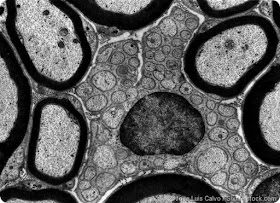There was a time in the philosophy of science when it may have been believed that scientific knowledge develops in a logical, linear way from observation and experiment to finished theory. This was something like the view presupposed by the founding logical positivists like Carnap and Reichenbach. But we now understand that the creation of a field of science is a social process with a great deal of contingency and path-dependence. The institutions through which science proceeds -- journals, funding agencies, academic departments, Ph.D. programs -- are all influenced by the particular interests and goals of a variety of actors, with the result that a field of science develops (or fails to develop) with a huge amount of contingency. Researchers in the history of science and the sociology of science and technology approach this problem in fairly different ways.
Scott Frickel's 2004 book Chemical Consequences: Environmental Mutagens, Scientist Activism, and the Rise of Genetic Toxicology represents an effort to trace out the circumstances of the emergence of a new scientific sub-discipline, genetic toxicology. "This book is a historical sociological account of the rise of genetic toxicology and the scientists' social movement that created it" (kl 37).
Frickel identifies two large families of approaches to the study of scientific disciplines: "institutionalist accounts of discipline and specialty formation" and "cultural studies of 'disciplinarity' [that] make few epistemological distinctions between the cognitive core of scientific knowledge and the social structures, practices, and processes that advance and suspend it" (kl 63). He identifies himself primarily with the former approach:
I draw from both modes of analysis, but I am less concerned with what postmodernist science studies call the micropolitics of meaning than I am with the institutional politics of knowledge. This perspective views discipline building as a political process that involves alliance building, role definition, and resource allocation. ... My main focus is on the structures and processes of decision making in science that influence who is authorized to make knowledge, what groups are given access to that knowledge, and how and where that knowledge is implemented (or not). (kl 71)Crucial for Frickel's study of genetic toxicology is this family of questions: "How is knowledge produced, organized, and made credible 'in-between' existing disciplines? What institutional conditions nurture interdisciplinary work? How are porous boundaries controlled? Genetic toxicology's advocates pondered similar questions. Some complained that disciplinary ethnocentrism prevented many biologists' appreciation for the broader ecological implications of their own investigations.... " (kl 99).
The account Frickel provides involves all of the institutional contingency that we might hope for; at the same time, it is an encouraging account for anyone committed to the importance of scientific research in charting a set of solutions to the enormous problems humanity currently faces.
Led by geneticists, these innovations were also intensely interdisciplinary, reflecting the efforts of scientists working in academic, government, and industry settings whose training was rooted in more than thirty disciplines and departments ranging across the biological, agricultural, environmental, and health sciences. Although falling short of some scientists' personal visions of what this new science could become, their campaign had lasting impacts. Chief among these outcomes have been the emergence of a set of institutions, professional roles, and laboratory practices known collectively as "genetic toxicology." (kl 37)Frickel gives prominence to the politics of environmental activism in the emergence and directions of the new discipline of genetic toxicology. Activists on campus and in the broader society gave impetus to the need for new scientific research on the various toxic effects of pesticides and industrial chemicals; but they also affected the formation of the scientists themselves.
Also of interest is an edited volume on interdisciplinary research in the sciences edited by Frickel, Mathieu Albert, and Barbara Prainsack, Investigating Interdisciplinary Collaboration: Theory and Practice across Disciplines. The book takes special notice of some of the failures of interdisciplinarity, and calls for a careful assessment of the successes and failures of interdisciplinary research projects.
We think that these celebratory accounts give insufficient analytical attention to the insistent and sustained push from administrators, policy makers, and funding agencies to engineer new research collaborations across disciplines. In our view, the stakes of these efforts to seed interdisciplinary research and teaching "from above" are sufficiently high to warrant a rigorous empirical examination of the academic and social value of interdisciplinarity. (kl 187)In their excellent introduction Frickel, Albert, and Prainsack write:
A major problem that one confronts in assuming the superiority of interdisciplinary research is a basic lack of studies that use comparative designs to establish that measurable differences in fact exist and to demonstrate the value of interdisciplinarity relative to disciplinary research. (kl 303)They believe that the appreciation of "interdisciplinary research projects" for its own sake depends on several uncertain presuppositions: that interdisciplinary knowledge is better knowledge, that disciplines constrain interdisciplinary knowledge, and that interdisciplinary interactions are unconstrained by hierarchies. They believe that each of these assumptions is dubious.
Both books are highly interesting to anyone concerned with the development and growth of scientific knowledge. Once we abandoned the premises of logical positivism, we needed a more sophisticated understanding of how the domain of scientific research, empirical and theoretical, is constituted in actual social institutional settings. How is it that Western biology did better than Lysenko? How can environmental science re-establish its credentials for credibility with an increasingly skeptical public? How are we to cope with the proliferation of pseudo-science in crucial areas -- health and medicine, climate, the feasibility of human habitation on Mars? Why should we be confident that the institutions of university science, peer review, tier-one journals, and National Academy selection committees succeed in guiding us to better, more veridical understandings of the empirical world around us?
Earlier posts have addressed topics concerning social studies of science; link, link, link.)


No comments:
Post a Comment